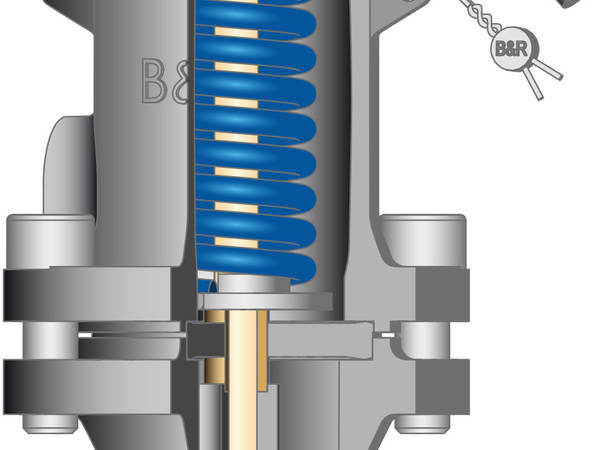

If you work in engineering, you quite often have to explain exactly what you do during birthdays or at the pub. It is difficult for outsiders to understand what the working day of a spring safety specialist looks like. And yet this technical process safety product is so important that we at Hitma have even set up a complete website for it. By the way, did you know that safety relief valves have been in use since 1600? And in virtually the same form as today.
The History of Safety Valves
The first safety valve was used in a steam installation and was invented by the German Johann Rudolf Glauber (1604-1670). You might know him as the discoverer of the preparation method and medicinal properties of sodium sulfate (Glauber's salt). Glauber improved various chemical apparatus and is often referred to as the first process technologist. The Frenchman Denis Papin (1647-1712), a pioneer in the development of the modern steam engine, further improved the technology of the safety valve.
Primary Function of Safety Valves
What are safety valves used for? The primary function of pressure protection devices, such as safety valves, is to protect human lives and work environments. When there is excessive pressure in a process, if the upward (process medium) force is greater than the downward (spring) force, a dangerous situation can arise due to the explosion of the installation. To prevent catastrophes, the safety valve will open and release the pressure. When the pressure returns to normal and the situation is under control, the safety valve will close again. It's as simple as that.
Codes and Applications
Because safety valves are so important for the safety of industrial processes, the rules for their design and sizing are strict. The following codes from regulatory agencies are used worldwide, including:
- ASME (American Society of Mechanical Engineers)
- API 520 (American Petroleum Institute)
- AD 2000-A2 (DIN) Deutsches Institut für Normung
- ISO 4126-7 (DIN) International Organization for Standardization (PED directive)
Where Are Safety Valves Used?
Safety valves are used in industrial applications involving liquids, air, gas, vapor, and steam. You can find them, for example, on boilers, tanks, and process installations in the petrochemical industry, oil and gas industry, and power plants. The most common scenarios in which safety valves are used are blocked discharge, control valve failure, fire case, and thermal expansion.
IMI Bopp & Reuther
Hitma collaborates with the German manufacturer IMI Bopp & Reuther PI. They develop and produce the following types of safety valves:
- Conventional
- Balanced bellows
- Pneumatically actuated (CSPRS: Controlled Safety Pressure Relief Systems)
These can be found on our website in the following groups:
- Standard safety valves
- High-pressure safety valves
- High-flow safety valves
- Special safety valves
- Polypropylene safety valves
All models comply with the PED 2014/68/EU section 14 (Pressure Equipment Directive). These are the regulations for pressure equipment applicable in all member states of the European Union. This includes the DIN, ISO, and AD 2000-A2 standards, and these safety valves receive CE approval. We can also supply safety valves under the API 520/API 526, ASME VIII, and ASME I codes. Available with CE marking and/or U, UV, or V marking, depending on the design code.
Did you know that safety relief valves have been in use since the 1600s? And in almost the same form as today.
Sizing Program Si-tech 4.0
In 2016, Bopp & Reuther introduced a new sizing program, Si-tech 4.0. With this update, their software is ready for the future. My colleagues and I have been extensively trained by B&R to calculate safety valves using this new software, ensuring they meet the specific requirements of modern industrial processes. Hitma customers can also calculate the valves they need if they wish. The program allows the creation and printing of datasheets, which are useful for internal discussions or communication with Hitma engineers. We, of course, verify the final sizing. An important advantage of the new software is that it provides safety valves that are actually available.
There Is So Much More to Tell
I hope this blog has conveyed where my passion for safety valves comes from. I can tell you much more about them (and I’m happy to do so). If you have questions about the calculation or application possibilities of the different safety valves, feel free to contact me.


